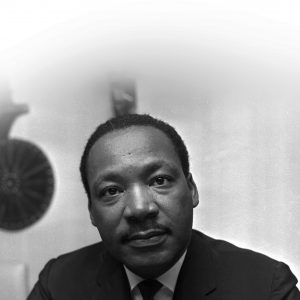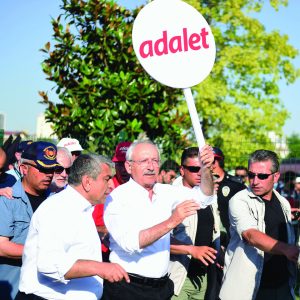Walking is not only healthy, it also sharpens your senses for our forests, for flora and fauna, for nature, and sets the economy straight again – getting around on foot can also become a highly political matter. If you’re not aware of this yet, have a look back in history.
The Salt March of 1930…
was a campaign by Mahatma Gandhi that was intended to break the British monopoly on salt and, in the end, led to India’s independence from Britain. The Salt March was the most spectacular campaign launched by Gandhi during his fight for independence. The campaign aimed to inspire civil disobedience and to stand up against the dependence on too high taxes imposed by Great Britain.

On 12th March 1930, Gandhi set off from his home town with 78 of his supporters, on a march that continued for 385 kilometres to Dandi on the Arabian Sea. He arrived there 24 days later and picked up some grains of salt as a symbolic act to demonstrate against the British salt monopoly. Salt had always been an important economic factor in India and was also needed by the general population firstly to cook the staple of rice, and secondly to compensate for the daily loss of electrolytes in a hot climate. Gandhi asked his fellow citizens to do the same as him, while avoiding violence, which happened all over India: not only did his supporters start producing their own salt by putting salt water in a bowl in the sun and leaving it to evaporate; other Indians took part too. Added to this, they used the salt they produced not only for their own purposes but also sold it on free of tax.
Because every form of production, transportation and trading of salt was reserved for the British, around 50,000 Indians were arrested as a result, including almost all the leaders of the Congress Party, which to a large extent accelerated the campaign’s success.
Source: https://en.wikipedia.org/wiki/Salt_March
The 1963 March for Jobs and Freedom…

American Civil Rights Leader
Doctor of Philosophy from Harvard
Universal Pictorial Press Photo
PW1 152672
a promise that had been given when the USA was founded, namely that all people are created equal, that they are endowed by their Creator with certain unalienable rights, and that among these are life, liberty and the pursuit of happiness.
In 1963, almost 200 years after the Declaration of Independence was committed to paper, a whole century after a great civil war was fought and the abolition of slavery was declared, these truths remained unfulfilled. People thus came by the thousand from every corner of the country; women and men, young and old, blacks who longed for freedom and whites who could no longer accept that they were free while others were oppressed.
Barack Obama in a speech about Martin Luther King jr:
“But we would do well to recall that day itself also belonged to those ordinary people whose names never appeared in the history books, never got on TV. Many had gone to segregated schools and sat at segregated lunch counters. They lived in towns where they couldn’t vote and cities where their votes didn’t matter. They were couples in love who couldn’t marry, soldiers who fought for freedom abroad that they found denied to them at home. They had seen loved ones beaten, and children fire-hosed, and they had every reason to lash out in anger, or resign themselves to a bitter fate.
And yet they chose a different path. In the face of hatred, they prayed for their tormentors. In the face of violence, they stood up and sat in, with the moral force of nonviolence. Willingly, they went to jail to protest unjust laws, their cells swelling with the sound of freedom songs. A lifetime of indignities had taught them that no man can take away the dignity and grace that God grants us. They had learned through hard experience what Frederick Douglass once taught — that freedom is not given, it must be won, through struggle and discipline, persistence and faith.
That was the spirit they brought here (to Washington) that day. That was the spirit young people like John Lewis brought to that day. That was the spirit that they carried with them, like a torch, back to their cities and their neighborhoods. That steady flame of conscience and courage that would sustain them through the campaigns to come — through boycotts and voter registration drives and smaller marches far from the spotlight; through the loss of four little girls in Birmingham, and the carnage of the Edmund Pettus Bridge, and the agony of Dallas and California and Memphis. Through setbacks and heartbreaks and gnawing doubt, that flame of justice flickered; it never died.
And because they kept marching, America changed. Because they marched, a Civil Rights law was passed. Because they marched, a Voting Rights law was signed. Because they marched, doors of opportunity and education swung open so their daughters and sons could finally imagine a life for themselves beyond washing somebody else’s laundry or shining somebody else’s shoes. Because they marched, city councils changed and state legislatures changed, and Congress changed, and, yes, eventually, the White House changed.
Because they marched, America became more free and more fair — not just for African Americans, but for women and Latinos, Asians and Native Americans; for Catholics, Jews, and Muslims; for gays, for Americans with a disability. America changed for you and for me. And the entire world drew strength from that example, whether the young people who watched from the other side of an Iron Curtain and would eventually tear down that wall, or the young people inside South Africa who would eventually end the scourge of apartheid.”
The 2017 March for Justice…

The Turkish opposition leader Kemal Kiliçdaroglu walked 400 km from Ankara to Istanbul to demand basic rights for Turks on his march for justice in Turkey. His march, which he began almost alone on 15th June, was joined by increasing numbers of people on each day of the walk, and by the end around 100,000 people were following the march to demand the release of arrested journalists, politicians and teachers. The end of the state of emergency, the reinstatement of the independence of Turkish courts and the end of the arbitrariness of the security apparatus were demanded from President Recep Tayyip Erdogan by the marchers …
What effect would a march have that emphatically demanded the fulfilment of the 2015 Paris climate goals? Less driving, less flying, less burning of oil, gas and coal and more getting around on foot!
 Eco123 Revista da Economia e Ecologia
Eco123 Revista da Economia e Ecologia

